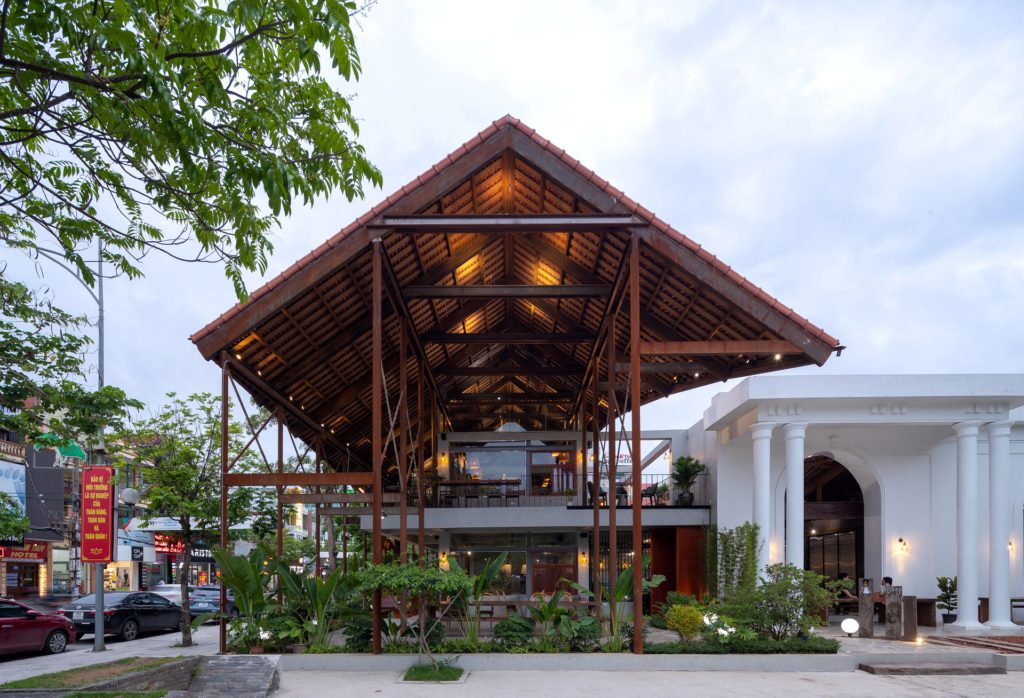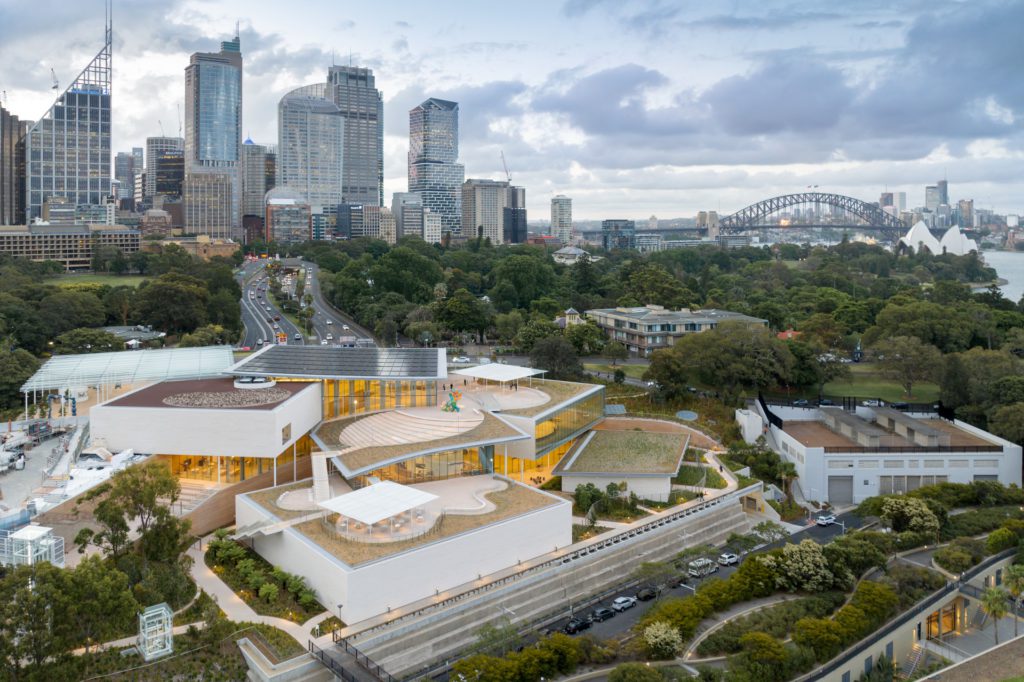
This project comprised a renovation of two existing buildings with two different architectural styles: a streetside café and a portion of a neoclassical wedding hall. Instead of demolishing them, the architects retained the structure, floor plates and the hall. The contrasting buildings were linked together by fluid, curved roofs made of the same material, representing […]
Read More… from A climate-suited junction: MAY Café and Bakery

Above the Sydney Harbour in Australia, a 34-hectare parkland called the Domain sprawls out on the eastern fringe of the city’s central business district. In 1958, the construction of a freeway through the Domain separated two long-standing establishments: the city’s Royal Botanic Garden (built in the 1810s) and the adjacent Art Gallery of New South […]
Read More… from Sydney Modern Project by SANAA

China’s Grand Canal—the world’s longest and one of the oldest artificial waterways—played a key role in strengthening connections between the country’s south and north areas. Positioned at the canal’s southern extent is the city of Hangzhou, with an 18-hectare site formerly occupied by an oil refinery. Since the factory’s closure, most of the structures had […]
Read More… from Hangzhou Oil Refinery Factory Park: From ‘fossils’ to renewable energy

The regeneration of Fornebu Brygge, a fjord-side location just outside central Oslo in Denmark, aims to transform a disused parking lot into a centre for pioneering a sustainable ocean economy. It would provide the region with waterfront interactions and an arena for marine life preservation, sustainable food and energy production, and Green ocean transport solutions. […]
Read More… from A centre for sustainable ocean economy: Fornebu Brygge

This villa in Gurugram reimagined zoning regulations to become an open green space for a garden. In the area that is rapidly densifying into mid-rise apartment blocks, land parcels of 500 square metres must follow a 4-metre setback to both the front and rear of buildings, further limited with a 7×3-metre linear open space against […]
Read More… from Learning to love setbacks: 40/60 House

Japanese-Italian fusion goes beyond food and into building materials in this contemporary teahouse prototype called Veneti-An. The prototype is part of Time Space Existence, a European Cultural Center exhibition held in parallel with the Venice Biennale of Architecture 2023. Its design explores sustainability through materials and connection to the local context. Around the world, tea […]
Read More… from Veneti-An Tea House: Made from pasta and coffee waste

In the northern mountainous provinces of Vietnam, there is a type of vernacular house called the Trinh Tuong, standing for over 100 years with rammed earth walls (a technique now known as pisé). Such walls are completely handmade by compressing earth into even and flat cubes, which allows houses to be constructed without steel reinforcement. […]
Read More… from Brick House by the River: Pi House

The city of Fujiyoshida in Japan sits at the foot of Mount Fuji with hilly terrains as its panoramic backdrop. Here, the 10,000-square-metre site of this nursery is lush with trees and lakes. This led the owner to have an educational philosophy of “play to the fullest in the nature of Fujiyoshida—in rain or snow, […]
Read More… from ‘Cabin’ in the forest: UB Kindergarten and Nursery

The name of this house refers to the majestic Pongour Falls in Vietnam, a naturally stepped waterfall with terraced cliffs, interspersed by a landscape of wild-growing shrubs and trees. During dry seasons, visitors can climb up the cliffs to marvel at its rocky expanse. “If Pongour represents a natural landscape that looks like an artificial […]
Read More… from The Falls by Akitephile: Recreating a natural marvel

What does the office of the future look like? As habits around work are shifting, there is more demand for healthy and vibrant spaces, Green-certified office buildings and flexible spatial arrangements. For the refurbishment of a former bank headquarters into a government office building, UNStudio was commissioned by Edge to fuse the healthy and flexible […]
Read More… from Fellenoord 15 by UNStudio: Renovating an office for a smart future

In East Java, Indonesia, there are numerous artefacts that tell the story about the ancient kingdom of Majapahit. Some temples (candi) still stand to this day, especially in the area believed to be the old centre, called Trowulan. The brick-based Candi Pari and Candi Sumur can be visited nearby in Porong, Sidoarjo, quite close to […]
Read More… from Biophilic Office by andyrahman architect: A succession of brick craftsmanship

Plastic waste pollution is one of the world’s biggest sustainability problems and presents a direct threat to ecosystems. To reduce single-use plastics and further contribute to changing consumption and production patterns, a resort in Ninh Van Bay, Vietnam developed a small plant to produce drinking water in reusable glass bottles. Aside from serving the needs […]
Read More… from Water Bottling Plant in Ninh Van Bay by Chi.Arch



